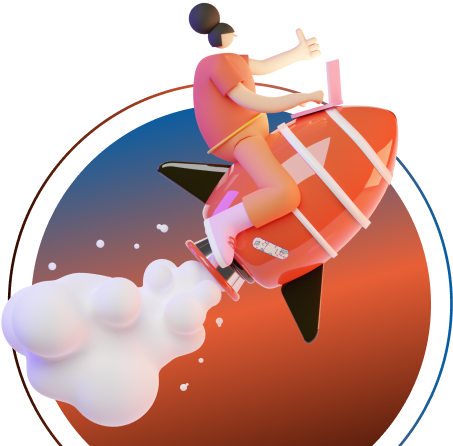How to Build an On-Demand Delivery App in 2024
table of contents
Market research screams ‘boom’ for on-demand delivery in 2024. This ultimate guide equips you with the cutting-edge strategies and tools to capture this lucrative opportunity and build a delivery app that wows users and fuels your business.
The power of crafting the on-demand delivery app that saves time simplifies your life and skyrockets your business growth in 2024. Imagine the satisfaction of building an app that simplifies lives and fuels businesses. Let’s embark on this journey together and build the on-demand delivery app that will make 2024 a year of convenience and success.
How to Build On-demand Delivery App
1. Define Your Target Audience and Goals
Consider scalability goals to accommodate growth. Define how your app will handle increased user loads, expanding services, and entering new markets. If applicable, establish goals related to regulatory compliance. Whenever start building an on-demand delivery app get answers to a few questions as follows:
Who are you building the app for? Understand their needs, pain points, and expectations.
What specific problems are you solving for them?
What value does your app provide?
What are your business goals for the app?
Increase sales, improve customer engagement, gather data?
2. Validate Your On-demand Delivery App Idea
Investigate existing on-demand delivery apps in your chosen market. Identify the pain points or challenges your target audience faces in the current delivery processes. This could include issues with existing services, inconvenience, delays, or lack of specific features.
Create surveys or conduct interviews to gather feedback directly from your potential users. Ask questions about their preferences, expectations, and experiences with existing delivery services. Use this information to identify pain points and preferences.
Collect feedback on usability, features, and overall satisfaction. Use this feedback to make iterative improvements to your app.
Want to Develop an App Within an Estimated Timeline?
Innvonix is a leading on-demand delivery app development company having worked with many clients from multiple industry.

3. Define Essential Features
User Side:
Location tracking and address management: Seamless location detection and address auto-fill features.
Product browsing and search: Easy-to-use search options and filters for quick discovery.
Cart and checkout: Secure and convenient payment integration with multiple options.
Order tracking and notifications: Real-time order tracking and push notifications for delivery updates.
Review and rating system: Encourage user feedback and improve your app based on ratings and reviews.
Delivery Partner Side:
Order allocation and route optimization: Efficient order assignment and route planning for timely deliveries.
Delivery confirmation and communication: Tools for notifying users about arrival and resolving any delivery issues.
Performance tracking and feedback: Monitor delivery personnel performance and provide feedback for improvement.
Admin Dashboard:
Build an admin dashboard to manage the overall operations of the on-demand delivery app. Admins should be able to monitor orders, track deliveries, and manage users and delivery personnel.
4. Choose a Business Model
Decide on your business model. Will you partner with local businesses, employ your delivery personnel, or allow third-party delivery providers to join your platform? Each model has its implications for operations and revenue.
Factors to Consider while Choosing a Business Model:
Target audience: What are their spending habits and willingness to pay for delivery?
Competition: What existing models are successful in your chosen niche?
Operational costs: Consider costs for drivers, logistics, marketing, and technology.
Value proposition: How will your model ensure both user satisfaction and profitability?
Hire Mobile App Developers
5. Choose the Right Technology Stack
Mobile app development: Consider hybrid frameworks like React Native or native development based on iOS and Android, depending on your budget and target audience.
Backend development: Opt for scalable and secure technologies like Node.js, Firebase, or AWS for efficient data management and API creation.
Additional tools: Explore third-party services for mapping, payment processing, push notifications, etc., to avoid reinventing the wheel.
Consider Technical Feasibility and Constraints:
Assess your development resources and budget: Determine what’s realistically achievable.
Evaluate technology limitations and compatibility: Ensure features are technically feasible.
Balance innovation with technical constraints: Find creative solutions within limitations.
6. Leverage Development Resources
Outsource development: Consider partnering with experienced developers or agencies if you lack in-house expertise.
Utilize online resources: Learn from tutorials, documentation, and forums dedicated to your chosen technology stack.
Join online communities: Connect with other developers and learn from their experiences.
7. Implement Security Measures
Implement robust security measures to protect user data and transactions. Use encryption protocols, secure connections, and follow best practices for data security.
8. Driver and Delivery Management
Manage delivery personnel efficiently with features like order allocation, route optimization, and performance tracking. Review and rating systems encourage user feedback and improve your app based on reviews and ratings.
9. User Feedback and Ratings
Develop a system for users to review and rate their delivery experience. This feedback mechanism is valuable for both users and the service providers. Users can share their feedback and rate the delivery experience. Positive feedback and ratings contribute to the reputation of the delivery person or service.
10. Payment Confirmation
Specify any preferences, delivery address, and payment method. The app confirms the completion of the transaction, and users may receive digital receipts. Payment is processed, and any relevant loyalty points or discounts are applied.
11. Track and Receive
Watch your order’s progress in real time and get notified when it arrives. Implement real-time tracking functionality using geolocation services. This is crucial for providing users with live updates on their deliveries.
12. Scalability Planning
Plan for scalability to accommodate an increasing user base and growing demand. Ensure that your app’s architecture is scalable, and resources can be easily expanded as needed.
13. Geofencing and Location Services
Implement geofencing for defining delivery zones and ensuring that deliveries are made within specified geographical boundaries. Utilize location services for accurate tracking.
Let's Discuss Your Project
Reach out and we will be happy to provide free consultation on your Frontend Development requirement.